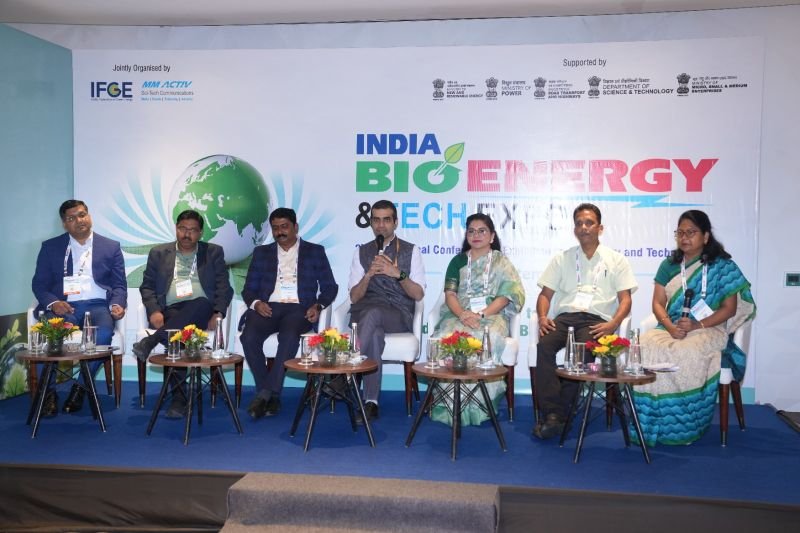Saturday, 22 November 2025

On the second day of India Bioenergy Tech & Expo 25, the session “Green Hydrogen – How Soon and How Much can be?” brought together distinguished policymakers, industry leaders, and researchers who explored the opportunities, challenges, and timelines for India’s Green Hydrogen economy.
The panellist of the session includes Prasad Chaphekar, Deputy Secretary, Ministry of New and Renewable Energy (MNRE); Dr Sonal K. Thengane, Associate Professor, Indian Institute of Technology, Roorkee; Dr DK Ragaranjan Reddy, Director (R&D, Business Operations), CANEX TECHNO PVT. LTD; Braj Nandan Singh, Business Development, Waaree Clean Energy Solutions and Pankaj Bindlish, Head – Bidding & Commercial, Hydrogen, ReNew. The session was moderated by Dr Sanjukta Subudhi, Associate Director & Senior Fellow, TERI – The Energy and Resources Institute.
Dr Prasad Chaphekar, highlighted the government’s policy push, supportive frameworks, and India’s roadmap for becoming a global hub in green hydrogen production and exports.
Bhagyashri Patil Ghongade emphasised the role of innovative technologies and startups in scaling hydrogen production and integrating with bioenergy solutions.
Dr Sonal K. Thengane, discussed academic research and technological breakthroughs in electrolysis and renewable integration for lowering production costs.
Dr DK Ragaranjan Reddy spoke about industrial applications of hydrogen, efficiency optimization, and bridging the R&D-commercialization gap.
Braj Nandan Singh focused on the role of solar and renewable energy integration for hydrogen projects and their large-scale deployment.
Pankaj Bindlish presented a commercial perspective, stressing the need for competitive pricing models, financing structures, and global market readiness.
The session was skilfully moderated by Dr Sanjukta Subudhi, Associate Director & Senior Fellow, TERI – The Energy and Resources Institute, who connected insights from policy, technology, research, and industry to showcase a holistic vision for India’s hydrogen future.
The discussion made it clear that Green Hydrogen was not just a possibility – it was an inevitable pillar of India’s clean energy transition, requiring collaboration between government, academia, startups, and large-scale industries.